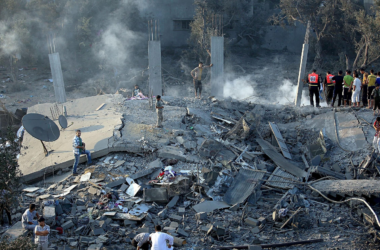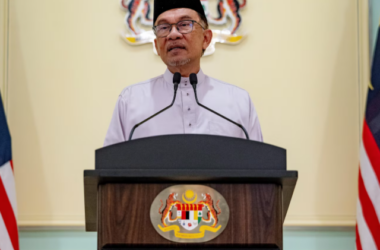A recent report published by the United Nations sheds light on the precarious living conditions in the Gaza Strip, revealing that a staggering 80% of the population relied on international aid as their primary source of support before the outbreak of the recent conflict. This stark revelation underscores the region’s vulnerability and the critical need for humanitarian assistance.
Gaza, a densely populated enclave in the Middle East, has been a focal point of international attention due to the recurring cycles of violence and protracted conflict. Even before the recent hostilities erupted, the living conditions in Gaza were challenging, with high levels of unemployment, limited access to basic services, and a fragile economy.
The United Nations report highlights the extent of this dependence on international aid, signifying the essential role that external assistance plays in the daily lives of Gaza’s residents. The aid includes food supplies, healthcare services, and support for basic infrastructure, all aimed at alleviating the humanitarian crisis that has persisted in the region for years.
In addition to the staggering dependence on international aid, the report also underscores the precariousness of the situation, which can deteriorate further in the aftermath of conflict. The destruction of infrastructure, displacement of families, and disruption of essential services exacerbate the suffering of the civilian population.
International humanitarian organizations have been working tirelessly to provide aid and support to the people of Gaza. However, the recent conflict has strained their capacity, making it even more challenging to meet the escalating needs of the population. The destruction of critical infrastructure, such as water and electricity facilities, has added to the urgency of the situation.
The report’s findings have prompted renewed calls for international cooperation and support to address the ongoing crisis in Gaza. While ceasefires and peace negotiations are essential steps toward long-term stability, the immediate focus remains on providing relief to those affected by the conflict.
Efforts are underway to deliver emergency aid, rebuild infrastructure, and offer psychosocial support to the affected population. The international community, including the United Nations, regional organizations, and non-governmental agencies, is mobilizing resources to meet the pressing needs of Gaza’s residents.
The situation in Gaza highlights the interplay of political, humanitarian, and security concerns in conflict-affected regions. The dependence on international aid serves as a stark reminder of the ongoing challenges facing the people of Gaza and the need for a comprehensive approach to address their immediate and long-term needs.
As efforts to stabilize the region continue, the international community remains committed to providing humanitarian aid and working towards a lasting resolution to the Israeli-Palestinian conflict, which is crucial for the well-being of the people of Gaza and the broader prospects for peace in the Middle East.








